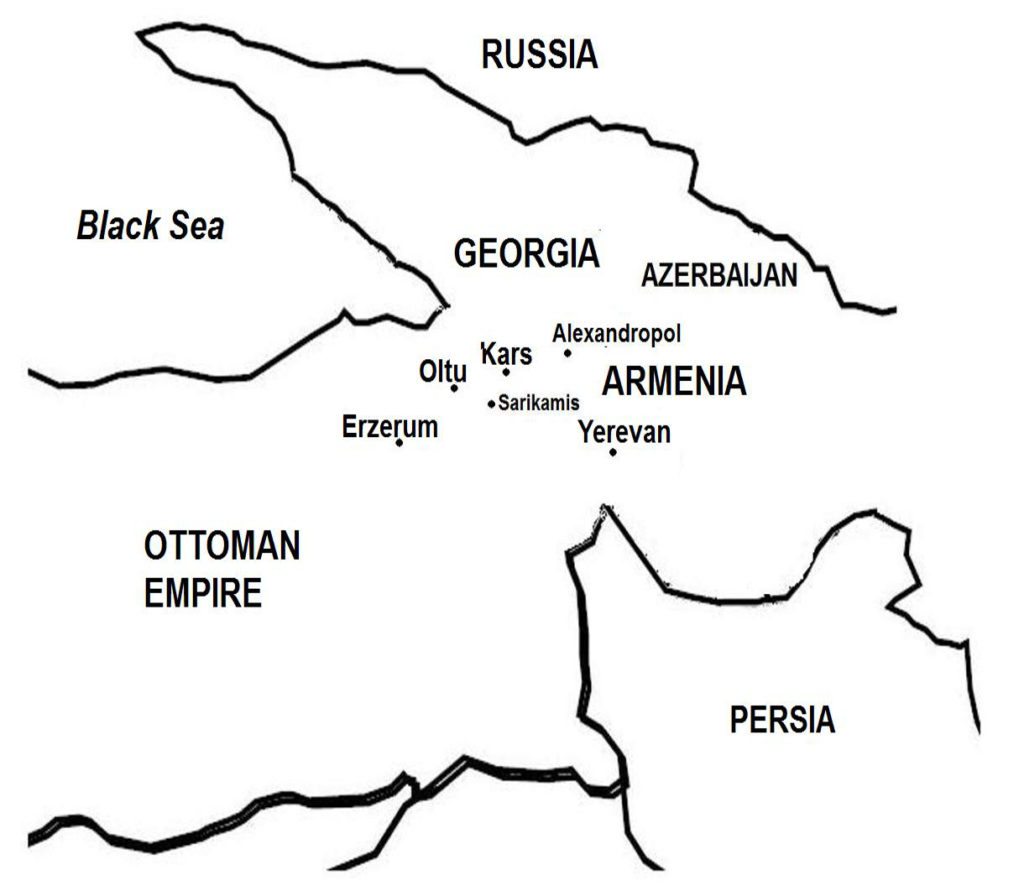In the aftermath of the Eastern Front of the Turkish War of Independence, the Ankara government and the Soviet Union made peace and fixed the Turkish-Soviet border under two treaties: the Treaty of Moscow (March 16, 1921) and the Treaty of Kars (October 13, 1921); the treaties also ended the war in the eastern sector.
(Taken from Turkish War of Independence – Wars of the 20th Century – Vol. 3)
War Turkish nationalists fought in three fronts: in the east against Armenia, in the south against France and the French Armenian Legion, and in the west against Greece, which was backed by Britain.
Eastern Front Also known as the Turkish-Armenian War, the eastern front carried over from hostilities in the Caucasus Sector of World War I. Russian forces had gained control of the Caucasus and northeast Turkey, but withdrew from the region in 1917 following the outbreak of the Russian Revolution. Later that year, the Ottomans and the Soviet government signed an armistice.
After the Russians withdrew, the South Caucasus jurisdictions of Armenia, Georgia, and Azerbaijan formed the short-lived Transcaucasian Democratic Federative Republic in February 1918. Then after the federation’s dissolution in May 1918, the three members declared separate independences. Armenia, which in the context of World War I supported the Allied Powers, went to war against the Ottoman Empire. The nascent Armenian state was dealt a number of defeats from a powerful Ottoman offensive, but survived the war.
At the end of World War I, United States President Woodrow Wilson, in line with his “Fourteen Points” Manifesto regarding the peoples’ right of self-determination, proposed a new, much enlarged Armenian state, subject to certain conditions. This so-called “Wilsonian Armenia” subsequently was included in the Treaty of Sevres. While ethnic Armenians welcomed the proposal as genuinely reflecting historical and geographical Armenian territory, the Turkish “government” in Ankara opposed it on the same grounds that the proposed change would encroach on the Turkish people’s traditional and ancestral homeland.
War Following border skirmishes in June 1920, Armenian troops seized Oltu, a coal-rich town in Georgia. Turkish forces associated with Kemal’s government had a strong presence in eastern Turkey. By contrast, Armenia’s prospects for victory was dependent on Allied support which, however, proved to be limited in supply and weak-hearted, which ultimately decided the outcome in this sector of the war.
Turkish forces began their offensive on September 13, easily overrunning the towns of Oltu and Peniak. On September 28, the border town of Sarikamis was taken as well, forcing Armenian forces to retreat to Kars, a fortified city in western Armenia. On October 24, 1920, Turkish forces entered Armenia and attacked Kars, which was taken after one week of fighting.
The Turks then rapidly advanced to Alexandropol, 280 kilometers away, which also was captured, on November 6. Yerevan, the Armenian capital, now came under direct threat. On November 18, 1920, the Armenian government acquiesced to a Turkish ultimatum, and a ceasefire came into effect. On December 2, 1920, the Armenian and Ankara governments signed the Treaty of Alexandropol, whereby Armenia ceased its claim to “Wilsonian Armenia” as stipulated in the Treaty of Sevres. The Alexandropol treaty also forced Armenia to cede Kars and surrounding regions; in total, some 50% of Armenian territory was lost, i.e. Armenia retained only one-half of its pre-war borders.
The Armenian state was dealt a death blow when the Soviet Union, on the pretext of a border dispute, invaded from Azerbaijan. On December 4, 1920, Yerevan fell to the Russians, and those parts not yet under Turkish occupation came under Soviet control. Armenian communists then formed a new government, bringing the country under indirect Soviet political authority. The Soviet invasion of Armenia was part of the Moscow government’s strategy to bring the Caucasus under the Soviet Union, a plan that was achieved when Georgia also was invaded by the Russians the following year.

In the aftermath, the Ankara government and the Soviet Union made peace and fixed the Turkish-Soviet border under two treaties: the Treaty of Moscow (March 16, 1921) and the Treaty of Kars (October 13, 1921); the treaties also ended the war in the eastern sector.
